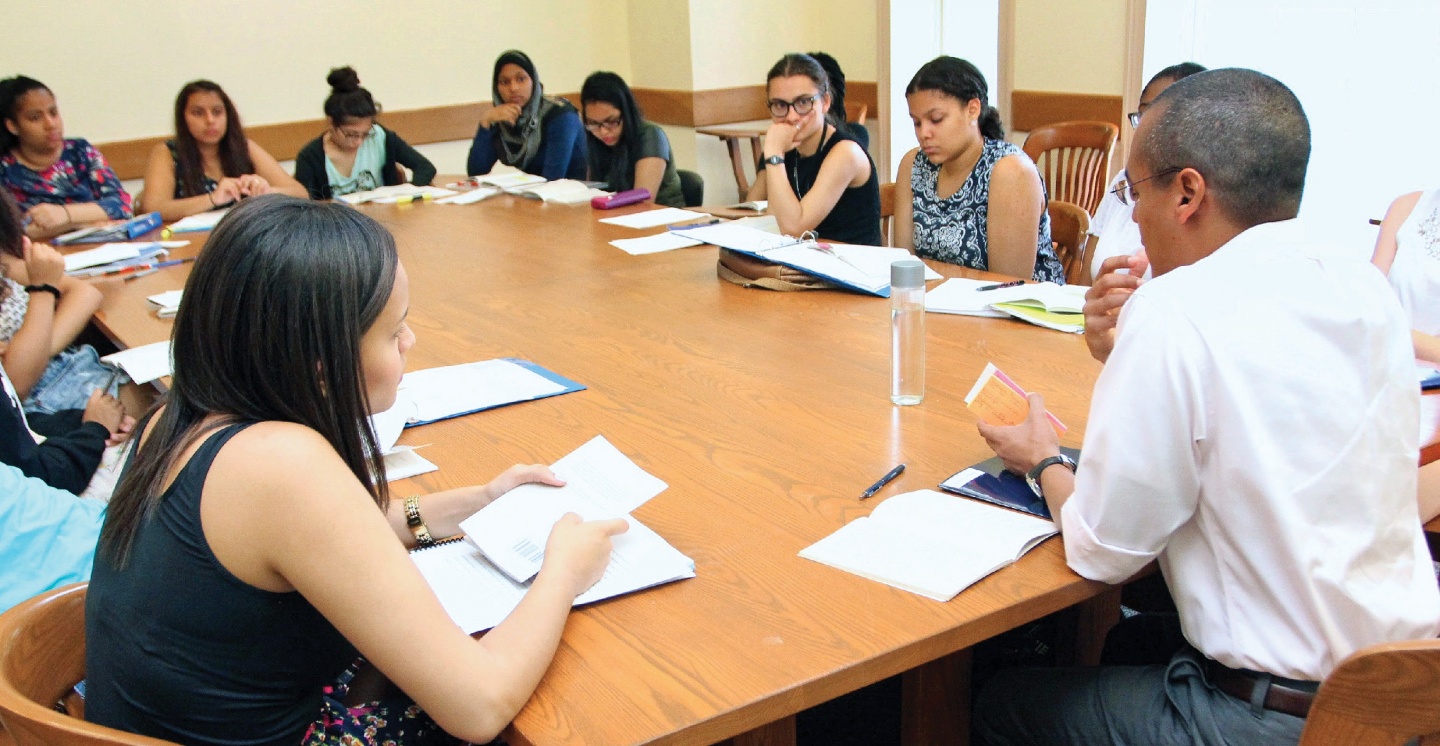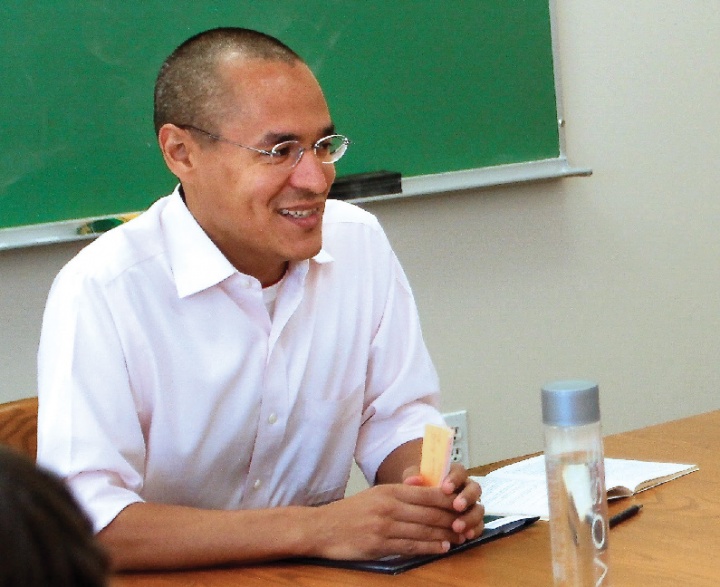Columbia College | Columbia University in the City of New York
Bringing the Core to High School Students

Center for the Core Curriculum Director Roosevelt Montás '95, GSAS '04 leads a Freedom and Citizenship program seminar.
Photos Courtesy Freedom and Citizenship at the Center for American Studies
Wrestling with Hobbes and Locke might not be the average summer fare for most high school students, but for the past decade Columbia’s Freedom and Citizenship summer program has encouraged a small set of rising seniors to pursue an experience — and an education — outside the norm.
The four-week seminar (one week of orientation, three weeks of classes), which recently marked its 10th anniversary, aims to give underrepresented (minority, immigrant and/or low-income) New York City students a taste of college life before they embark on their final year of high school.
Monday through Friday students have a reading and writing assignment — roughly 20 pages of reading from a Core Curriculum text and then a one-page reflection on the work. Students discuss the readings the following day during a two-hour seminar. In addition, the students — who live in campus residence halls Sunday night through Friday evening — meet with tutors in the afternoon and evening to go over the classwork.
Noted Columbia faculty deliver guest lectures throughout the seminar; this year featured historian Eric Foner ’63, GSAS’69 and linguist John McWhorter, among others. “There has been a tremendous eagerness among the most distinguished Columbia faculty to bring their expertise to this project,” says Roosevelt Montás ’95, GSAS’04, director of the Center for the Core Curriculum and one of the program’s founders.
In addition to Montás, Andrew Delbanco (the Alexander Hamilton Professor of American Studies) and Casey Blake (the Mendelson Family Professor of American Studies) helped create the seminar. Montás says the choice to get involved was easy: “Andy called me one day and said, ‘Hey, if we work up a partnership with the Double Discovery Center to teach a Core-like seminar in the summer to kids, would you be interested in designing that curriculum?’ — and that was music to my ears!” After drawing up the syllabus, Montás taught the first cohort of 15 students and continues to teach in the seminar today.
The program has grown to 45 students, but they still meet in groups of 15. Graduates have a 100 percent college placement rate and graduate at a much higher rate than their peers. Former students have returned as TAs and to attend reunions.

Montás says that thanks to the success of the program, Columbia is exporting the idea to other universities. He notes, “We see this program as offering a model to many other institutions for this kind of engagement with their communities”; Yale University and Carthage College have already launched similar programs and more schools have expressed interest in bringing the program to their campuses.
For Montás, who came to the United States at 12 not speaking much English, the program is a way to help a new generation of students like him experience the life-changing power of a Columbia education. “The thing I’m most passionate about is bringing a Core-type education to populations that have traditionally not had access to that kind of education,” he says. “Students’ lives are actually transformed by this kind of education.”
Issue Contents
Published three times a year by Columbia College for alumni, students, faculty, parents and friends.
Columbia Alumni Center
622 W. 113th St., MC 4530, 6th Fl.
New York, NY 10025
212-851-7852
cct@columbia.edu
Columbia Alumni Center
622 W. 113th St., MC 4530, 4th Fl.
New York, NY 10025
212-851-7488
ccalumni@columbia.edu

